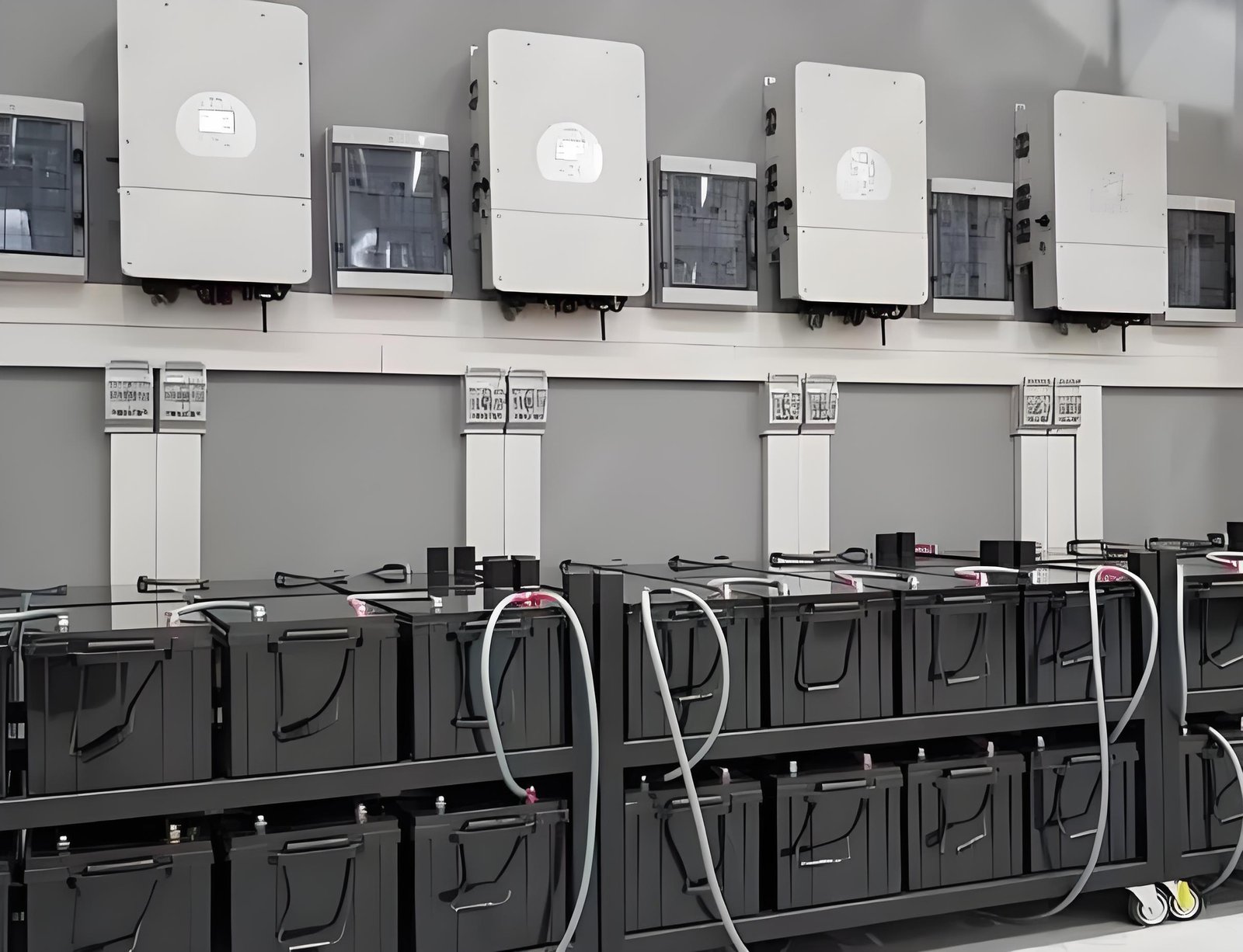Ensuring compatibility between your inverter and battery is crucial for efficient energy storage and system performance. Here’s a guide on how to make sure your equipment works well together.
When choosing an inverter and battery, it’s essential to compare key specifications, match technology types, and verify communication protocols for optimal integration.
Ready to ensure your inverter and battery are perfectly matched? Let’s dive into the key factors you need to consider.
What Key Specifications Should You Compare Between Inverters and Batteries?
When selecting an inverter and battery, comparing their key specifications is vital to ensuring they work together smoothly.
Key specifications include voltage, capacity, efficiency, and power ratings. Let’s break down each one to ensure compatibility.
Voltage Rating
У "The voltage rating of your battery and inverter must match to ensure compatibility. If the inverter and battery operate at different voltages, it could lead to inefficient energy conversion or damage to the system.
For example, a Інвертор 48В requires a 48V battery. Some solar systems may use 12V, 24Vабо 48V setups, so it’s important to choose components that align with each other’s voltage specifications.
Capacity and Power Ratings
Ємність (measured in kWh) refers to how much energy the battery can store, while power ratings (measured in kW) describe how much power the inverter can convert and supply to the electrical system. It’s important that the inverter is capable of handling the power output of the battery.
Ефективність
У "The ефективність1 of both the inverter and the battery should be compared. High-efficiency components maximize energy conversion and storage. Ensure that both components are optimized to minimize losses during the conversion process and that the overall system can handle your energy needs.
| Специфікація | What to Compare |
|---|---|
| Напруга | Match battery voltage with inverter voltage |
| Capacity & Power | Ensure inverter can handle battery output |
| Ефективність | Higher efficiency minimizes energy loss |
How Does Voltage, Capacity, and Current Affect Inverter-Battery Compatibility?
Voltage, capacity, and current are critical in determining how well your inverter and battery will perform together.
These factors impact the overall efficiency, safety, and performance of your energy system.
Сумісність з напругою
Voltage compatibility2 between the inverter and battery is crucial. A mismatch can lead to inefficiency or even system failure. For example, a 24V battery paired with a 48V inverter will not function properly and could cause potential damage to both components.
Capacity and Current
Battery current3 ratings are essential to ensure the inverter can handle the load. If your battery has a higher capacity but your inverter is not rated for that amount of current, it will struggle to convert and supply energy efficiently.
Impact of Mismatched Current Ratings
Current refers to the flow of electricity, measured in amperes (A). If the inverter is not capable of handling the current required by the battery, the system may overheat or the inverter may trip to prevent damage. Ensure that the inverter can handle the current output from the battery under various operating conditions.
| Параметр | Impact on Compatibility |
|---|---|
| Напруга | Must match across both components |
| Capacity & Power | Inverter must match battery’s power output |
| Течія | Ensure inverter can handle the battery’s current flow |
Why Is It Important to Match the Inverter Type with the Battery Technology?
Matching the inverter type with the battery technology is critical to ensure proper energy conversion and system longevity.
Different battery technologies, like Lead-Acid, LiFePO4, or Lithium-Ion, require different types of inverters for optimal performance.
Inverter Types and Battery Compatibility
There are two main types of inverters used with energy storage systems: grid-tied inverters4 і off-grid inverters. Each type is compatible with different battery technologies:
-
Мережеві інвертори: These are designed for solar systems connected to the electrical grid. They typically work well with Lithium-Ion and Акумулятори LiFePO45, which are more efficient and offer a longer lifespan compared to traditional lead-acid batteries.
-
Автономні інвертори: These are used for systems that are not connected to the grid, such as remote locations or fully independent homes. Lead-acid batteries are often used in these systems, though newer Lithium-Ion batteries can also be compatible.
Battery Technology Impact
For instance, if you are using a LiFePO4 battery, you will need an inverter designed to handle the specific charging and discharging characteristics of LiFePO4. Similarly, lead-acid batteries have different charge profiles, so an inverter that works well with lead-acid will not necessarily be compatible with Lithium-Ion or LiFePO4 batteries.
Міркування щодо ефективності
Matching the right inverter to the battery technology also improves overall system efficiency. Inverters are designed to handle specific charging profiles, ensuring the battery receives the correct charge for maximum lifespan and efficiency.
| Тип батареї | Compatible Inverter Type | Key Feature |
|---|---|---|
| Свинцево-кислотний | Off-grid inverters, Grid-tied (some) | Lower efficiency, less cycle life |
| Літій-іонний | Grid-tied or hybrid inverters | High efficiency, longer lifespan |
| LiFePO4 | Grid-tied or hybrid inverters | Safe, stable, longer cycle life |
How Can You Verify Communication Protocols for Seamless Inverter-Battery Integration?
Communication between your inverter and battery ensures seamless energy conversion and storage, optimizing the entire system.
Verifying that the inverter and battery communicate properly is essential for monitoring system performance and preventing faults.
Communication Protocols
Modern inverters and batteries use communication protocols to exchange information such as charging status, energy levels, and performance data. The most common protocols are:
- Modbus6: Used widely in energy systems for real-time data exchange between inverters, batteries, and monitoring systems.
- CAN Bus7: Often used in hybrid systems for high-speed communication between the inverter and battery.
- RS485: A communication standard that allows for long-distance transmission of data and is commonly used in industrial applications.
How to Verify Compatibility
To verify that your inverter and battery are compatible in terms of communication, check the technical specifications for both components. Look for whether they support the same protocol (e.g., Modbus, CAN Bus). If they do, the communication should be seamless. If not, you may need an additional gateway or controller to enable proper communication.
Monitoring and Control
Ensure that your system supports remote monitoring and control through apps or web interfaces. This feature allows you to track battery charge levels, inverter performance, and energy usage. Systems that support communication protocols such as Modbus or CAN Bus allow for easier integration with other energy management systems.
| Protocol | Мета |
|---|---|
| Modbus | Real-time data exchange between components |
| CAN Bus | High-speed communication in hybrid systems |
| RS485 | Long-distance communication for industrial setups |
Висновок
Ensuring compatibility between your inverter and battery is crucial for optimizing energy storage and system performance. By comparing key specifications, matching technology types, and verifying communication protocols, you can create a reliable and efficient energy system for your home or business.
Виноски:
-
Comparing ефективність ensures that energy loss is minimized during storage and conversion, optimizing system performance. ↩
-
Voltage compatibility ensures that the inverter and battery work safely and efficiently without causing damage or energy loss. ↩
-
Current ratings determine whether the inverter can handle the flow of electricity from the battery, avoiding overheating and system failure. ↩
-
Grid-tied inverters connect solar systems to the grid and work efficiently with modern battery types like Lithium-Ion and LiFePO4. ↩
-
Акумулятори LiFePO4 differ from lead-acid batteries, requiring inverters capable of handling their unique charging and discharging profiles. ↩
-
Modbus protocol is widely used for real-time data exchange between inverters, batteries, and monitoring systems, ensuring seamless integration. ↩
-
CAN Bus protocol enables high-speed communication in hybrid systems, optimizing data exchange between inverters and batteries. ↩








